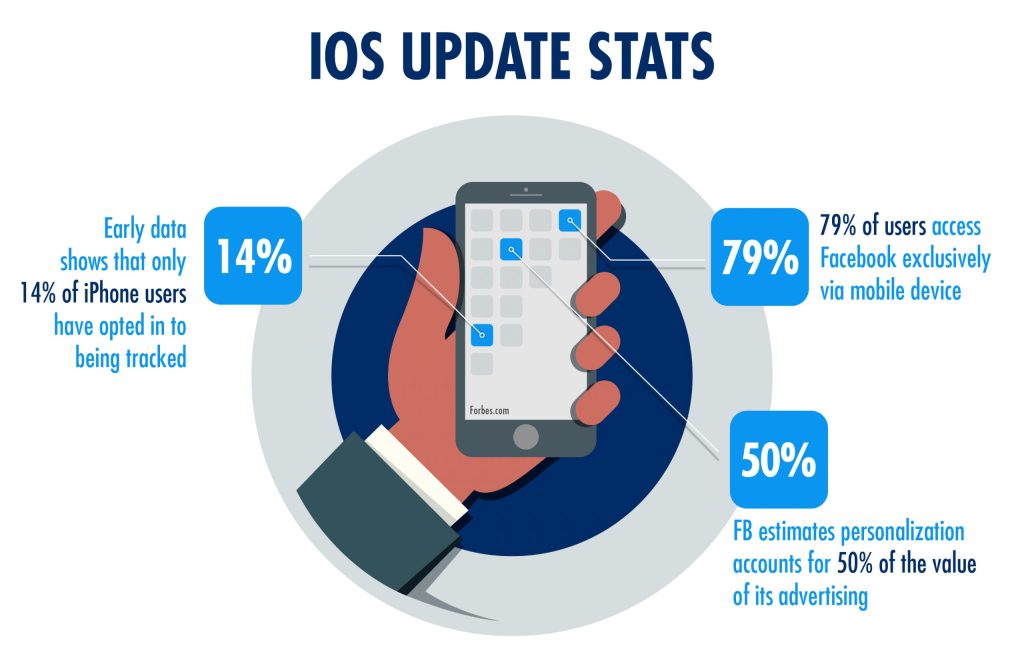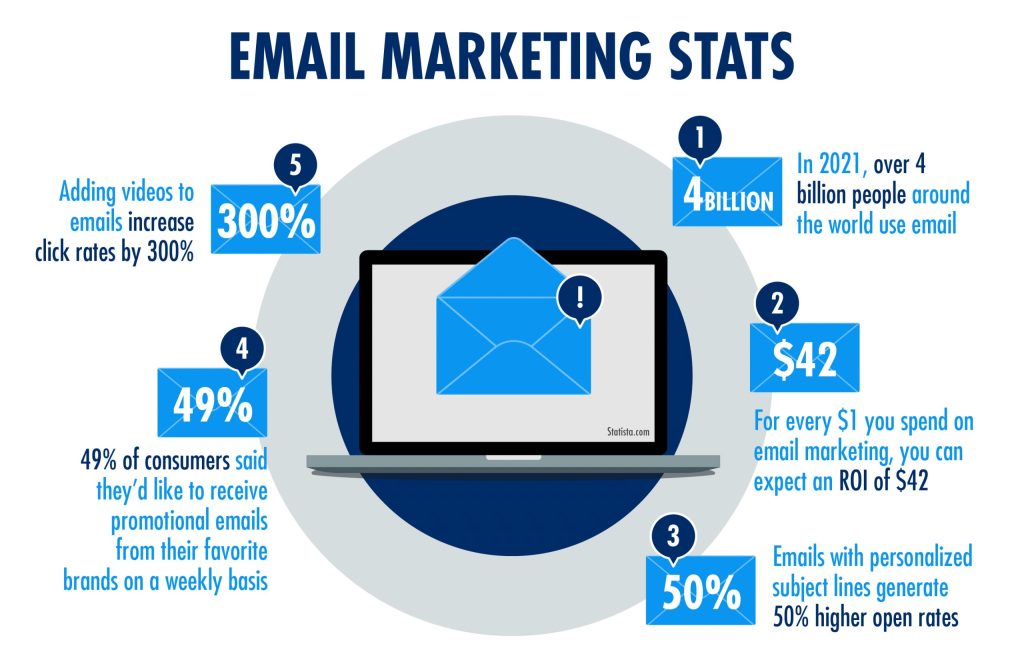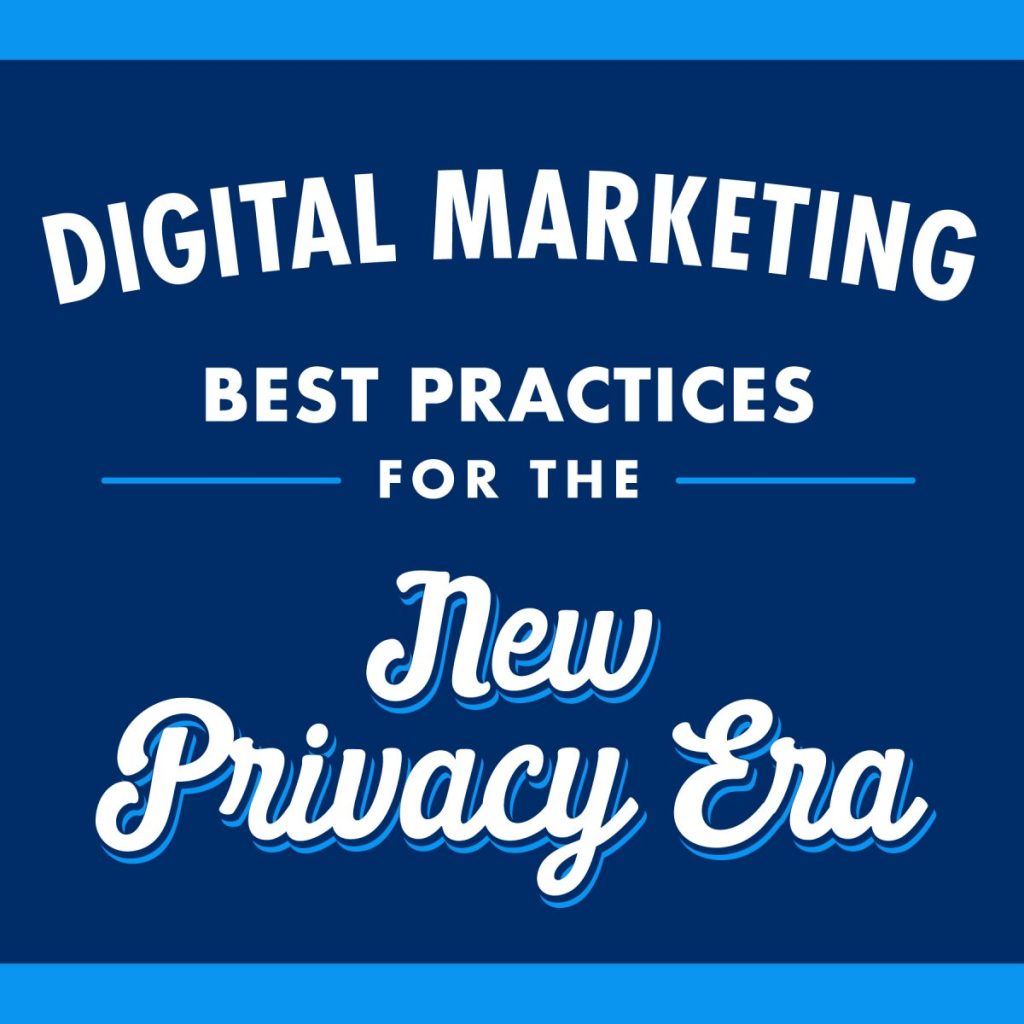Now that Apple’s iOS 14.5 update has officially rolled out, marketers have experienced firsthand how digital marketing best practices will have to adjust to the new normal in consumer data and privacy. The amount of information available is overwhelming, regardless if someone is in the industry or just a small business owner managing their digital presence. Keep reading for a few tips on how to proceed in this new era of the internet.
What did the iOS update change?
For years, digital marketing revolved around capturing as much consumer data as possible for targeted advertising purposes. Not just using tracking pixels on websites. Data was captured from every touchpoint, such as Smart TVs, GPS locations, wi-fi networks, banking transactions and grocery shopping – and then used to hyper-target ads specifically to a consumer.
Everyone has experienced this.
The shoes left in someone’s online shopping cart show up in ads peppered across their Instagram. That one Google search for nearby hiking trails causes ads for Patagonia and Subaru to run before every YouTube video. Online actions have always had digital marketing reactions.
That will still happen! However, it will happen a lot less, with a lot less accuracy, and with the user having a lot more control.
The iOS update limits what data online marketers can track while someone uses an Apple device (which number over 1.5 billion worldwide) and gives consumers the option to opt out of data sharing. Google made similar moves when they announced they would ban third-party cookies on their Chrome browser by 2022.

As a result of these new tracking limitations, digital marketers will have to modify their best practices for creating, monitoring and determining success in digital campaigns. This change delivered a significant blow to the Facebook Ads platform, which has relied heavily on tracking outside-Facebook browsing behavior of users to deliver targeted ads and report conversions.
What’s next in Digital Marketing?
There are clear-cut steps to be taken immediately to continue current digital marketing campaigns with as little interruption as possible.
Claim the domain.
Claim the business’s website domain on Facebook. This is incredibly important for two reasons.
For one, it allows the business website and Facebook page to communicate with each other, which will assist in tracking ad performance and retargeting purposes. Facebook has a step-by-step process listed here, and each business should be claimed by the Facebook ad account of the business, not by an outside ad agency.
Secondly, once a domain URL has been claimed on Facebook, there is no way to transfer or relinquish ownership of that claim. Undoubtedly, this leaves the opportunity for a hacker or former employee to gain access to the website and falsely claim a company’s domain, rerouting any Facebook queries to the page of their choosing. If this were to happen, Facebook has made clear that nothing can be done about it.
Grab the data that’s there.
Ensure any company website is set up with Google Analytics and that someone on the marketing team understands how to use it. Data is still king. It’s just that accessing it is going to be harder. Being able to collect and utilize the first-party data received from website visitors will be invaluable in understanding the customer base.
With Google Analytics, there is access to data of all kinds. There’s the high-level information, such as customer geography and demographics. However, it’s possible to drill down to the finer details of users’ browsing habits. This can include acquisition, which web pages were viewed and in which order. Understanding the journey visitors go on and which content they deem valuable, allows for better targeting for marketing efforts and product offerings.
Reset expectations.
For advertisers and businesses that have heavily relied on Facebook Ads, it is important to reevaluate budgets, strategies and metrics of success. Facebook will no longer be allowed to track users as they scatter across e-commerce sites, so the ability to measure attributions will be limited. There is still the functionality to track conversions on Facebook through the Aggregated Event Measurement. However, it is now limited to 8 conversion events per domain – not per pixel, per domain. The ad manager will have to configure and prioritize these events, as Facebook will only be allowed to receive one pixel signal from the browser at a time.
Read up on Facebook’s AEM protocol here.

Reach Your Customers Where They Are – Their Inbox.
Forget about how Google or Facebook want to let you reach customers. There is a tried-and-true way to reach your customer base that does not involve a pixel or tracking chip – the dependable, powerful, unsexy medium of email.
Find ways to engage website users so they want to give access to them. Whether it’s offering promotional, informational, or ethical value, find unique ways to connect and collect email addresses. Spend time organizing and automating email lists for website visitors on differing steps on the Customer’s Journey. Create thoughtful nurture campaigns to turn prospective customers into loyal customers. Offer hyper-personalization with every email sent so that a customer never feels as though they’re part of an email “blast.” This takes time and resources to set up properly, but it will have enormous ROI as email will once again be the most personalized way to digitally communicate with customers.
Don’t panic!
If you feel confused, do not panic! The most experienced digital marketers on the planet are also learning new best practices right now. Allow yourself time to make mistakes and adjustments. If you find yourself needing some professional support, Lundmark Advertising is always here to help.
